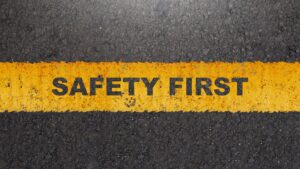Working with heavy machinery and power tools is part of the job, but it also comes with risks. Accidents can lead to broken bones, amputations, or worse. The good news? Most of these injuries can be avoided by sticking to smart safety practices. Whether you’re on the tools or managing a crew, here’s what you need to know to keep yourself and your team safe.
Why Do Equipment Accidents Happen?
Before we jump into solutions, let’s break down the main causes of equipment-related injuries:
- Lack of Training – If you don’t know how to properly operate a machine, you’re more likely to get hurt.
- Broken or Missing Safety Guards – Guards are there to protect you. If they’re not in place, you’re at risk.
- Skipping Lockout/Tagout (LOTO) Procedures – Machines starting up unexpectedly during maintenance can cause serious injuries.
- Distractions and Fatigue – Being tired or unfocused can lead to mistakes that cost you.
- Poor Equipment Maintenance – Worn-out or damaged equipment is dangerous.

How to Prevent Injuries on the Job
Staying safe around heavy equipment isn’t complicated—it just takes awareness and discipline. Follow these steps to protect yourself and your crew:
1. Get Proper Training
Before using any machine, make sure you know how to operate it safely. If you’re unsure, ask a supervisor or a seasoned coworker. Training should also cover emergency procedures so you know what to do if something goes wrong.
2. Use Safety Guards—Every Time
Never use a machine without the proper guards in place. They protect you from flying debris, moving parts, and other hazards. If a guard is missing or broken, report it and don’t use the machine until it’s fixed.
3. Follow Lockout/Tagout (LOTO) Rules
Before working on a machine, make sure it’s completely shut down and locked out. This prevents it from turning on unexpectedly while being repaired. Always double-check power sources before starting work.
4. Wear Your PPE—It’s There for a Reason
Personal Protective Equipment (PPE) is your last line of defense. Gloves, safety glasses, steel-toed boots, and hearing protection can prevent serious injuries. It might feel like a hassle, but it’s worth it.
5. Stay Focused—No Distractions
Being tired or distracted around heavy equipment can be deadly. Take regular breaks, stay off your phone when working, and always be aware of your surroundings.
6. Inspect Equipment Before Use
Always check your tools and machines before you start. Look for loose bolts, worn parts, or anything that seems off. Regular maintenance prevents breakdowns that could lead to accidents.
Get Certified: Machine Guarding Safety Training
A safe worksite starts with knowledge. Make sure you and your team are prepared by enrolling in our Machine Guarding Safety course. This OSHA-approved training covers hazard recognition, equipment safety, and compliance rules.
FAQs
1. What are machine guards, and why are they important?
Machine guards are protective barriers that keep you from coming into contact with dangerous moving parts. They prevent serious injuries like cuts and amputations.
2. What should I do if I see a missing or damaged guard?
Stop using the machine and report the issue immediately. Never operate equipment that’s missing safety guards.
3. How often should equipment be inspected?
Do a quick check before every use, and make sure regular maintenance is scheduled to catch any potential issues.
Stay Alert, Stay Safe
By staying alert and making safety a priority, you can help ensure that everyone goes home in one piece at the end of the day.




